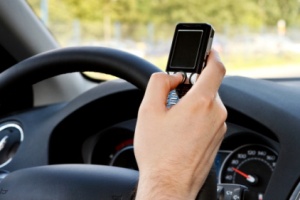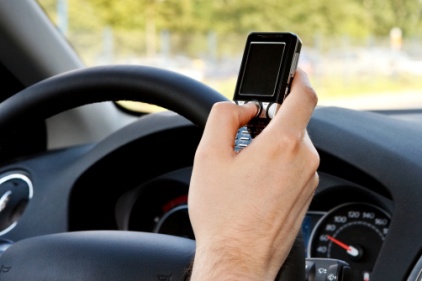 The American Association of Safety Engineers (ASSE) is using Distracted Driving Awareness Month (April) as an opportunity to offer up new resources to help drivers avoid this growing danger.
The American Association of Safety Engineers (ASSE) is using Distracted Driving Awareness Month (April) as an opportunity to offer up new resources to help drivers avoid this growing danger.
The group's Transportation Practice Specialty (TPS) has developed a ‘How to Avoid Distracted Driving’ tip sheet discussing crash force, distraction events, distance traveled in seconds and more. It's available at a new ASSE distracted driving website.
The ASSE says that distracted driving can lead to harrowing, life changing events.
"A vehicle is a machine weighing anywhere from 3,000 pounds and up and can cause major damage especially if it crashing while traveling at speeds of 40 miles or more per hour," according to the TPS. "Massive damage can occur even it one takes their eyes off the road for a second."
Statistics show that 500,000 people are injured each year and another 6,000 are killed by drivers who are distracted, particularly by their phone. Young drivers are more likely to be killed in distraction-related crashes, according to the U.S. Department of Transportation (DOT). A recent Governor’s Highway Safety Association (GHSA) report found an increase in teen driver roadway crash fatalities in the first six months of 2011, illustrating a need to increase awareness about the dangers of distracted driving especially for teens. Noting the increase in injuries, ASSE chapters will also be discussing the topic at meetings.
“We are very concerned as roadway crashes continue to be the number one cause of on-the-job deaths,” ASSE President Terrie S. Norris, CSP, ARM, CSPI, said today. “Life can change in a second. Consider this — you’re doing yard work one warm spring day and your, let’s say, mother decides to go to the store to get some garlic bread to go with the spaghetti being made for dinner. While still in the yard you hear a car pulling into the driveway and think your mother has returned from shopping. But, as you lift your head you see it’s a police car instead. The policeman slowly gets out of the car and tells you the bad news – your mother died when the driver of another car, while texting, veered into the wrong lane and slammed into her car. She died instantly, he says.
“In the span of about one hour you went from gardening, joking with your mother to being told she is dead. Then you have to tell the bad news to your family and friends. So instead of enjoying a spring spaghetti dinner that night, you and your family are planning a funeral,” Norris said. “This happens several times a day around the world and the pain of such an incident lasts forever. Roadway crashes, fatalities and injuries caused by distracted drivers must stop now.”
The TPS group works daily on transportation safety protecting their employees by developing and implementing driver safety programs as well as commercial vehicle safety maintenance programs. Most work for companies that have long standing ‘driver safety’ company policies which include banning in-vehicle cell phone use and other distracted driving activities. ASSE member Randall Butler, of Bridgeview, IL, noted that he has put in commercial vehicle safety programs for his company at locations around the U.S. and done training and has found that this works. The major problem that we have, he says, is not being able to control other drivers on the road.
TPS members Earnest F. Harper, CSP, DABFE, DABFET, CFC, of Idaho, and Timothy C. Healey, of Connecticut, say people should realize there are clear physical dynamics involved that can be dangerous when one is operating a large machine like a car and take their eyes off the wheel, even for a few seconds.
“At 40 mph you are traveling 58.7 feet-per-second (fps) meaning that in the 2.9 seconds it takes for that eye glance, looking away from the road ahead, to reach for something you will have traveled 170 feet (58.7fps x 2.9s). At 60 mph, you are moving at 88 fps,” Harper said. “During that 2.9 second glance away from what you are driving into, you have traveled over 255 feet.”
“In either case, at these common speeds, each is more than enough time to end up being several feet under that slow moving tractor-trailer rig ahead of you that you didn’t see,” Healey noted. “And in a 40 mph crash a 100 pound person or child who isn’t wearing a seat belt will hit the dash board with a force of 2.6 tons, and a 3,000 pound car crashing at 40 mph will experience a crash force of 80.28 tons reducing any chance of surviving.”
Tips for avoiding distracted driving from the TPS:
Program your device so you do not answer and notify the caller that you will be driving and are not available to respond at the moment. In an emergency, family should know to call 911 or other family members. If family or certain individuals urgently need to reach you, devise a procedure such as three rings, hang up, wait two minutes and call again, repeat once to allow time to pull over safely.
Know your route in advance and, if using a navigation system, pre-program it.
Prepare the vehicle cab and yourself for driving, including your management of any distraction, be they inside or outside of your vehicle.
Focus on driving: Maintain safe spacing or move to a less obstructed lane.
The ASSE urges motorists to turn off their phones when they're in the car, and also to avoid, avoid eating while driving. Program the GPS before you leave. Minimizing distractions allows drivers to maximize their attention on the road.
For more information on distracted driving, go to: www.distraction.gov or www.drivesmartva.org.


